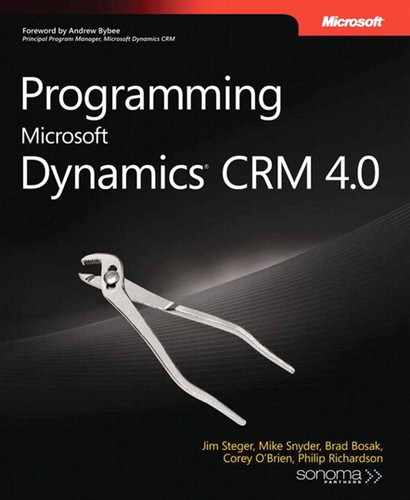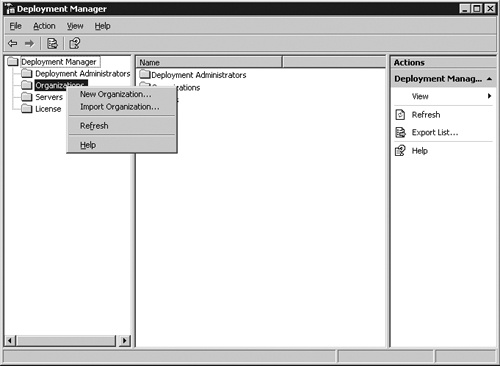Often your developers or test team want real data to use in their development and testing environments. The process to move data from environment to environment depends on exactly what customizations and enhancements were made to the development system. It could consist of simply exporting and importing customizations, or it might contain more significant changes that warrant a full installation program. Fortunately, Microsoft Dynamics CRM 4.0 provides a simple process to redeploy an organization from one environment to another.
Microsoft Dynamics CRM 4.0 stores all of its transactional data and metadata in one database called <organization>_mscrm, where <organization> is the name of the organization you configured when you deployed. Therefore, to move transactional and metadata from one system to another, you simply need to restore the <organization>_mscrm database to your new environment and use the Microsoft Dynamics CRM Deployment Manager to import the new organization. This process includes customizations stored in the database, such as entity and attribute changes, security roles, native workflow rules, and any plug-in or workflow assembly deployed to the database. Custom Web pages or third-party integration still need to be deployed separately.
Important
You need the Microsoft Dynamics CRM 4.0 Enterprise version to access multiple active organizations. Microsoft Dynamics CRM 4.0 Professional only permits one active organization at a time. You can import a new organization with Microsoft Dynamics CRM 4.0 Professional, but the import process will ask you to disable the current organization prior to proceeding with the import.
Let’s step through a redeployment process on Microsoft Dynamics CRM Enterprise Server edition. In this example, we take a sample production system and redeploy it to our test environment.
Redeploying Microsoft Dynamics CRM
Back up the source Microsoft Dynamics CRM database. The database will be named <organization>_mscrm.
Restore the backup file on your new target SQL Server computer.
Log on to the Microsoft Dynamics CRM Web server and open the Microsoft Dynamics CRM Deployment Manager console from the Program Files menu.
Right-click Organizations and select Import Organization.
On the Import Organization Wizard page, select the target SQL Server and choose your newly restored database.
Enter the display name and name for your new organization and click Next.
As with a brand-new Microsoft Dynamics CRM installation, you need an existing Reporting Services installation. In the Report Server URL field, enter a valid Reporting Services URL and click Next.
Now map the users from the source system to the users in the destination system. Remember that Microsoft Dynamics CRM uses Active Directory to authenticate users to the application. You have numerous options for mapping users. For our example, we will leave the default settings selected. Click Next.
Optionally, edit any user mappings. Click Next.
The Microsoft Dynamics CRM Import Organization Wizard now validates your entries. If the review screen returns no errors, click Next. Otherwise, correct the error and then try again.
On the Ready to Import page, review your sections. If you are satisfied with your selections, click Import to begin the import organization process.
These simple steps allow you to quickly and easily move a Microsoft Dynamics CRM deployment between servers or within environments.






